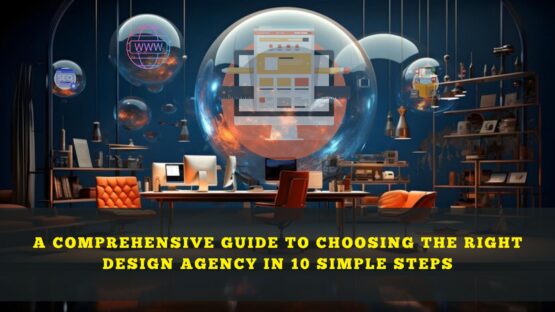Your website is often the first point of contact between your brand and your audience. One of the most important aspects of web design is choosing the right color palette. It plays a pivotal role in the realm of branding.
Have you ever noticed that nearly every fast-food restaurant incorporates red and yellow into their logos? This choice is no coincidence; these colors together have the power to stimulate feelings of hunger and friendliness.
This comprehensive guide aims to help you in making informed decisions about the color scheme for your website including the latest trends too..
Understanding the Psychology Behind It
Before diving into the tips and trends, it’s essential to understand the psychology of colors. These have unique psychological effects on individuals, and understanding these effects can help you craft a palette that aligns with your website’s purpose and audience.
- Warm Colors: They denote red, orange, and yellow are known to evoke energy, enthusiasm, and a sense of urgency. They are often used to grab attention, boost appetite, and create a sense of excitement. However, too much of its use can be overwhelming, so it’s crucial to balance them with cooler tones.
- Cool Colors: These denote blue, green, purple and are associated with calmness, reliability, and relaxation. They are often used to create a soothing and serene environment. These work well for websites related to health, technology, and nature. However, excessive use might make a website feel cold and detached.
- Neutral Colors: White, gray, and beige belonging to these category are versatile and timeless. They provide a clean and minimalist look and can be used as a backdrop to make other elements stand out. They are often used in combination with accent colors to create a balanced and sophisticated design.
Tips for Choosing the Right Color Palette
- Define Your Brand Identity – The website’s color palette should align with your brand’s identity starting from defining your brand’s core values and personality. Consider whether your brand is fun and youthful or serious and professional. For example, if you’re operating a children’s toy company, vibrant and playful tones would be a fitting choice.
- Consider Your Target Audience – Your target audience plays a pivotal role in determining this palette. Different demographics may respond differently to certain colors. Research must be done and preferences should be prioritised.
- Use Color Harmonies – Complementary, analogous, or triadic color schemes, can help create visually appealing designs.
- Test for Accessibility – Accessibility is a vital consideration in web design. The chosen palette must be accessed by all users, including those with visual impairments.
- Limit Your Color Palette – While it can be tempting to use a wide range of these it’s often best to keep your palette relatively selective. Too many of them would saturate users and make your website look haphazard. Primary , secondary and accent colors may be used to maintain visual consistency.
- Test, Iterate, and Get Feedback – Before finalizing, conduct a test in various contexts. View it on different devices and screens to ensure it looks consistent. Additionally, take feedback from colleagues, friends to gather different opinions and identify any potential issues.
Current Color Trends in Web Design
Web design trends have considerably progressed over time. Here, take a sneak peek at the latest trends ……
- Neutrals : These palettes feature shades like grays, whites, and beiges and are widely used nowadays.These backgrounds provide a clean and modern aesthetic, allowing other design elements to stand out.
- Dark mode: This mode has gained significant popularity in recent years. Dark color schemes provide a polished and sophisticated appearance, reduce eye strain, and enhance the visibility of other elements on the page.
- Gradients and duotones: Gradients involve blending two or more colors together, creating a smooth transition between them. They add depth, visual interest, and a sense of dynamism to the design. Duotones, on the other hand, involve using two contrasting tones to create a striking visual effect.
- Vibrant and saturated colors: Bold and vibrant colors have become well known in web design, especially for brands targeting a younger generation creating an energetic and eye-catching presence.
- Monochromatic and color-blocking: These schemes involve using variations of a single color. This creates a harmonious and cohesive look while allowing designers to play with different shades, tints, and tones. Color-blocking, on the other hand, involves using contrasting tones in distinct blocks creating a visually striking and modern look.
By understanding the psychology of colors, considering your brand identity, and following current trends can aid in creating a visually captivating website that resonates with your audiences.
Ready to create a visually mesmerizing one?
Choose Palmetto Web Design Company…..The Leaders in Website Designing
We design a dynamic website for your business that will accurately capture your company’s brand identity and translate it into a powerful marketing tool.




